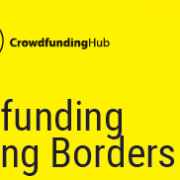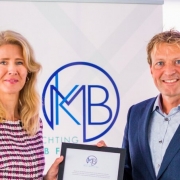Current State of Crowdfunding in the Netherlands 2016
An overview

Inhabitants: 17 million
GDP (ppp) per capita: $49,094
(Source: Wikipedia; Image Credit: NuclearVacuum)
The alternative finance industry in the Netherlands has a long history and a wide variety of crowdfunding platforms. Crowdfunding started in 2006 with the reward based platform Sellaband. In 2010 several P2P business platforms were launched. In 2011 the first equity platform started. In recent years the industry saw the advent of several international platforms, making the industry a vibrant place of crowdfunding activity. P2P business lending counts the lion share of volumes in the Dutch crowdfunding market. As per April 1, 2016, the Dutch regulatory framework applicable to lending and equity based crowdfunding will be amended. With the amended regulations the Netherlands try to foster the further growth of the industry, in order to improve the access of finance for SME’s.
Volumes
For some years now the crowdfunding industry is doubling in volume each year. In 2015 €128 million was raised, subdivided to:
- Donation based crowdfunding: €4,4 million
- Reward based crowdfunding: €20,3 million
- Lending based crowdfunding: €98,9 million
- Equity based crowdfunding: €4,5 million*
Source: Douw&Koren, Crowdfunding in Nederland 2015
*according to Crowdfundmarkt, equity based crowdfunding counts for €6,9 million (Crowdfinance 2015, the full report)
Local platforms
VoorDeKunst is a donation based platform for the creative sector, founded in 2010.
GeldVoorElkaar is the largest P2P business lending platform and started in 2010.
Oneplanetcrowd launched in 2012, it offers loans and convertible loans to sustainable project through its platform.
Collin Crowdfund and Kapitaal Op Maat are both P2P business lending platforms that started their activities in 2013.
Symbid is an equity based platform that launched in 2011.
Foreign Platforms
Spotcap, headquartered in German, launched its P2P business lending platform in 2015.
Lendico, P2P business and consumer lending platform started in 2014.
The UK based P2P business lender Funding Circle entered the Dutch market in 2015 by acquiring Zencap.
Kickstarter officially launched in 2014 in he Netherlands. Indiegogo is also present.
Regulations
There is no specific regulation for donation and reward based crowdfunding.
In 2014 lending and equity based platforms have to register at the Netherlands Authority for the Financial Markets (AFM) in order to get a licence to operate or an exemption for this license. More than 60 platforms are now registered.
As per April 1, 2016, the Dutch regulatory framework applicable to loan based crowdfunding and equity based crowdfunding will be amended.
Investment limits applicable to lending and equity based crowdfunding platforms are doubled to €40.000 (equity based) and €80.000 (based loan) respectively. Platforms need to conduct an investors test in order to assess whether the investment is sound for this particular retail investor.
From the investors test it should become apparent that the investor invests a sound part of his/her freely available assets for investment. The AFM holds the view that a retail investor should not invest more than 10% of his/her freely available assets for investments in crowdfunding projects.
The crowdfunding platform needs to conduct an investor test prior to the initial investment of such retail investor through the crowdfunding platform in excess of €500. Moreover, the crowdfunding platform needs to re-assess whether any investment exceeding the first €5000 as well as any multiple of €5000 thereafter through the platform is sound by re-determining whether the investor has sufficient freely available assets for investment.
Any loan based or equity based crowdfunding platform needs to fill in the monitoring form made available on the website of the AFM on a semi-annual basis.
A loan based crowdfunding platform in the Netherlands (and focusing on non-consumer credit only) should have obtained a dispensation for the prohibition to act as intermediary in respect of redeemable funds pursuant to the Dutch Financial Supervision Act before it can become operational.
It should be noted that at the moment a loan becomes negotiable another regulatory regime becomes applicable to the crowdfunding platform. As from that moment, a dispensation from the prohibition to act as intermediary in respect of redeemable funds no longer suffices; the crowdfunding platform will generally be considered to provide investment services if it acts as a broker between the borrower on the one hand and the investors on the other hand. As a consequence, the platform would require a license as an investment firm and will become subject to the heavy ‘MiFID’ framework.
In anticipation to MiFID II an inducement ban already applies to investment firms under Dutch law. As such, an equity based crowdfunding platform will – subject to it qualifying as an investment firm – not be entitled to provide or receive, directly or indirectly, any inducement in respect of the investment services provided by it other than directly from its client and subject to a limited number, generally not applicable, exceptions. Loan based crowdfunding platforms are not subject to this inducement ban. In order to create a level playing field between these two types of crowdfunding platforms, the crowdfunding decree includes a new exception to this inducement ban for crowdfunding platforms having a MiFID license.
(An extended version of the above text can be found on the site of FG Lawyers, New Crowdfunding Rules as per 1 April 2016.)
Banks
Banks do not enter the crowdfunding market on a grand scale yet. One bank launched their own platform, but closed it after a couple of years. Generally speaking, the banks seem to have a positive but still wait-and-see approach towards the industry and cooperate with existing platforms for co-financing projects.
Our expert

“The real economy will get a boost if the banking and alternative finance industry take next steps in combining new and traditional finance instruments”
The Current State of Crowdfunding in Austria is made possible by the contribution of Carlien Roodink
What is the potential of crowdfunding in your country?
The volumes of the Dutch crowdfunding industry prove that crowdfunding ‘is here to stay’. Measured in volume per capita the Netherlands rank among the top 3 of European countries. Compared to other countries the volume P2P business lending is very high.
These volumes were realized even before the new regulations on lending and equity based crowdfunding come into effect. With the new regulations the AFM is aiming at the further growth of these types of crowdfunding. Especially with regard to equity crowdfunding, there is still a lot of potential for further growth of the industry.
P2P consumer lending is still in its infancy compared to the other types of crowdfunding. Only €3,6 million was raised in 2015 (total volume of the industry is €128 million). There are no regulatory hindrances preventing the growth of consumer lending.
Civic crowdfunding is a new upcoming type of crowdfunding in the Netherlands. Projects in the public space and/or projects with a special focus on serving local communities are more and more financed by crowdfunding. An example is the crowdfunding campaign for the (re)building of a regional hospital that raised €10,8 million.
What are the biggest challenges?
The effects of the new regulations regarding investor tests are being disputed by the P2P lending platforms. It is their point of view that the tests imply a heavy administrative burden for the platforms and discomfort for the retail investors and therefore will hinder the use of crowdfunding instead of fostering the use of crowdfunding. In the coming year it will show if the industry is right in disputing the effects of rules. The AFM has already announced that the new regulation is seen as a pilot.
What is the future holding for the Netherlands?
SME’s raised €92 million on P2P lending platforms. In order to make this form of crowdfunding a real alternative for bank loans and close the funding gap for SME’s, next steps will have to be taken in combining new and traditional finance instruments. This requires close cooperation between banks and platforms, willingness to build interfaces between each other’s working processes and willingness to refer clients to one another. If these kind of next steps are taken, the funding cap for SME’s will be closed. In the end the real economy will get a real boost from this.









